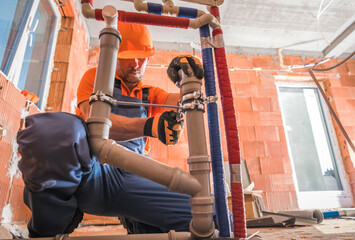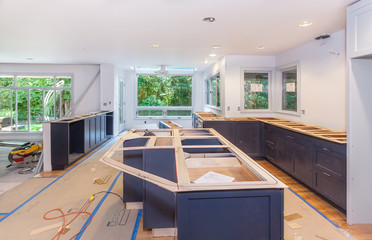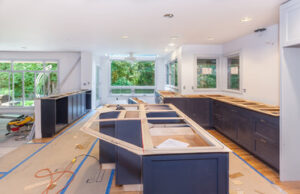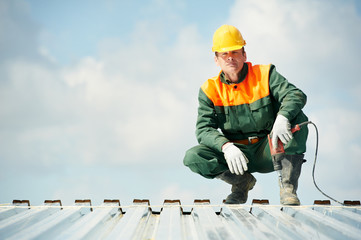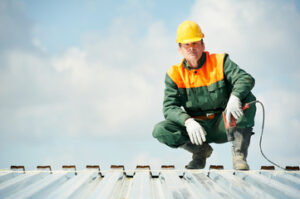Platinum Plumbing covers offices, restaurants, and other public water supply and drainage systems. The pipes are usually larger and more complicated than those in residential properties.
They also experience a lot more wear and tear due to frequent usage. Commercial plumbing is regulated more than residential plumbing, and plumbers sometimes must adhere to strict work hours.
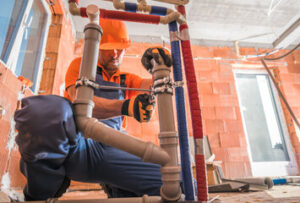
Commercial plumbing deals with larger-scale systems that supply water and remove waste for different types of businesses or public spaces. It is more demanding than residential plumbing because of its size and complexity. In addition, commercial plumbing deals with a higher volume of usage that causes more wear and tear. As a result, it requires more frequent maintenance and repairs.
The first step in commercial plumbing is installing the piping system. This includes laying out the piping outside the building and then running it inside. It also involves connecting the piping to the sinks, toilets, and other fixtures. Commercial plumbing services also include installing water fountains and ensuring that the drainage system is working properly.
When it comes to commercial plumbing, the piping is usually made of a thicker material than residential pipes. This is because it must be able to withstand heavier use and harsher conditions. In addition, the piping is often run through a centralized heating system that must be able to withstand high temperatures. As a result, the piping must be well-insulated to protect it from freezing and bursting in the winter.
Another difference between residential and commercial plumbing is that the latter typically works 24 hours a day. This means that there is a much higher chance of a plumbing problem occurring at a business than at a home. Therefore, it is important for commercial plumbing companies to have emergency services available for their clients.
Additionally, commercial plumbing is usually more regulated than residential plumbing. This is because commercial buildings, like hospitals and shopping centers, must follow strict health regulations. For example, restaurants must have drains that can easily be cleaned to avoid clogging and other problems. As a result, it is important for commercial plumbers to have extensive knowledge of these regulations and how they apply to specific piping systems. This way, they can ensure that the piping is up to code and will not cause any issues in the future. Also, it is helpful for them to know what types of fixtures are most suitable for each piping system in order to meet regulations and avoid any future problems.
Commercial plumbing systems are in constant use and have much higher demands on them than residential plumbing. This is one of the main reasons why it’s so important to find a plumbing company that specializes in commercial plumbing rather than just a typical plumber. In a single building, hundreds of people may be using the toilets, sinks, and drinking fountains on a daily basis. That means that the system will experience more wear and tear than a typical house would, which can lead to issues like clogs and leaks.
Preventive maintenance is one of the most important services offered by commercial plumbing companies. These services can help businesses and property managers avoid costly repairs in the future. They can also help maintain a safe and healthy workplace for employees and visitors.
Regular inspections and preventive maintenance can identify potential problems before they turn into major issues. This helps save money in the long run, and it can also help extend the lifespan of plumbing fixtures. In addition, routine maintenance can ensure that the plumbing system is running properly and in compliance with all local codes and regulations.
Plumbing contractors often have a lot of different tasks on their plate, including overseeing office operations and managing their field technicians. This can be a challenging task, as it requires a lot of organization and planning to ensure that everything runs smoothly. Fortunately, there are several apps and tools available to streamline these processes. For example, ServiceTitan’s membership feature provides a central location to manage all maintenance agreements and recurring service details for commercial clients. It can also be used to record and compare meter and pressure gauge readings in order to detect any abnormalities.
This helps to eliminate manual processes and ensures that all essential details are captured. Plus, it can help to foster accountability and improve customer experiences. Another way to streamline these processes is to use a service management software like BuildOps. This software allows for easy online collaboration between the office and the field, and it can be used to create and submit custom checklists that help keep technicians on track. For example, a plumber can be prompted to complete an inspection report form when they close out a job. This can help to ensure that all required tasks are completed and can also reduce the risk of missed paperwork or inconsistencies in data entry.
Commercial plumbing repair services are similar to those offered by residential plumbers but on a larger scale. This is because the pipework and drain systems in a large building are more complex than a home, which means there’s more to go wrong. Additionally, a single commercial space often has many more people using its plumbing than a residential location, which means things get used a lot more frequently and can suffer from wear and tear faster.
Because of the nature of their work, commercial plumbers spend a lot more time on maintenance and repairs than their residential counterparts. This is because the problems they deal with are more extensive and tend to happen in higher-use buildings where the wear and tear is more pronounced. For example, if a drain becomes clogged in a busy restaurant or office space, it can cause significant issues and delays for the business. This is because the staff and customers will have to use alternative routes for water until the problem can be fixed.
Additionally, commercial plumbing contractors often have to take into account the role of gravity when dealing with pipes in multiple stories. This is because the lower floors of a building will have less pressure than the upper floors, which can make it difficult for water to flow down. This can lead to a number of issues, including low water pressure in certain areas and even flooding.
When a commercial plumbing issue arises, it’s important to act quickly. Otherwise, the problem can worsen and cause major disruptions for employees or customers. This is why it’s crucial to have a reliable commercial plumbing company on hand to handle any emergency situations.
A good commercial plumber will have a wide range of plumbing repair services to offer their clients, from unclogging drains to installing new fixtures. They’ll also be able to provide routine maintenance and service for existing plumbing systems to keep them in good working order. With the right commercial plumbers, businesses can avoid costly plumbing repairs in the future and maintain a high standard of professionalism for their customers.
Commercial plumbing is more complex than residential plumbing because of the larger size of buildings and spaces that need to be served. Larger spaces require more sinks, toilets, outlets, and pipes to support the increased usage that a business may experience on a daily basis. This also means that there is a greater chance of issues like leaks, clogs, and breakdowns.
When these problems arise, they can be much more difficult to repair than in a home because there are usually more people using the same systems at once. If a leak is left untreated, it could lead to water damage in the floors, walls, and ceilings of the building. It is important for businesses to invest in regular maintenance services so that these problems are caught before they cause major damage.
In addition to checking for leaks and repairing them as needed, commercial plumbers can also help businesses upgrade their plumbing systems. For example, if you have galvanized pipes that are rusting and breaking down, they can be replaced with new copper pipes. This is a long-term investment that will save your business money in the long run because copper pipes last for decades and don’t need to be replaced.
Another service that many commercial plumbers offer is sewer line replacement. This is a more extensive service than repairing a small leak, but it can be very necessary for businesses that rely on the proper functioning of their plumbing system. Commercial plumbers can replace old lines with newer, more durable ones that will withstand the higher levels of use and abuse that come from a busy business environment.
If you are looking for a commercial plumber, look for one who has experience working on large industrial and manufacturing facilities. These types of jobs require a special skill set that is different from working on homes. Additionally, a commercial plumber will be more familiar with the equipment and machinery used in these kinds of settings. This will be beneficial for your business because it will allow them to work more efficiently and quickly.

